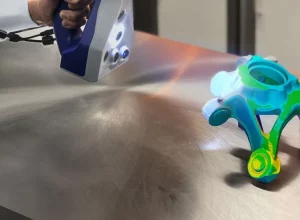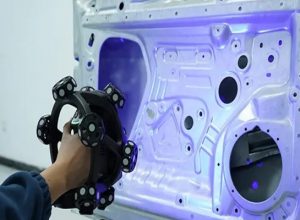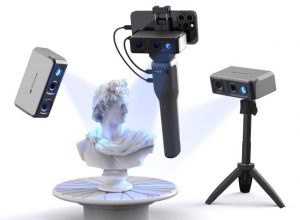Contents
Applications of 3D Scanning Across Different Domains
Industrial Engineering and Manufacturing
3D scanning technology has revolutionized industrial design and quality control processes. Manufacturers utilize advanced 3D scanners to capture precise dimensional data of complex mechanical parts, enabling comprehensive reverse engineering and quality assurance.
Modern industrial 3D scanning technologies leverage sophisticated optical and laser-based measurement techniques that can capture intricate geometries with micron-level precision. These non-contact measurement systems provide unprecedented accuracy, allowing engineers to analyze component tolerances, detect microscopic defects, and validate manufacturing specifications with exceptional reliability.
Key Industrial Applications
- Precise dimensional inspection of manufactured components
- Rapid prototyping and product development
- Complex surface analysis for aerospace and automotive industries
- Tooling and mold verification
- Failure analysis and root cause investigation
Advanced Scanning Technologies
| Scanning Method | Precision Level | Primary Industrial Use |
|---|---|---|
| Laser Triangulation | ±0.05mm | Small part inspection |
| Structured Light | ±0.1mm | Complex geometry scanning |
| Photogrammetry | ±0.5mm | Large-scale industrial components |
By integrating advanced 3D scanning technologies, manufacturers can significantly reduce production errors, minimize material waste, and accelerate product development cycles. The ability to quickly capture and analyze precise geometric data transforms traditional quality control processes, enabling more efficient and accurate manufacturing strategies.
Medical Diagnostics and Healthcare
In medical fields, 3D scanning provides groundbreaking solutions for patient care and treatment. Advanced scanning technologies enable detailed anatomical mapping and personalized medical interventions through precise digital reconstruction of human anatomy.
Modern medical 3D scanning technologies leverage sophisticated imaging techniques like computed tomography (CT), magnetic resonance imaging (MRI), and optical surface scanning to create intricate three-dimensional representations of patient anatomy. These digital models facilitate unprecedented precision in medical diagnosis, treatment planning, and personalized healthcare interventions.
| Medical Application | Scanning Technique | Technological Advantage |
|---|---|---|
| Orthopedic Prosthetics | High-resolution body part scanning | Custom-fitted prosthetic design with millimeter-level accuracy |
| Dental Reconstructions | Intraoral precision scanning | Digital impressions eliminating traditional molding techniques |
| Surgical Planning | Detailed anatomical modeling | Pre-operative simulation and complex procedure visualization |
| Cancer Treatment | Tumor volume and morphology scanning | Precise radiation targeting and treatment monitoring |
The integration of artificial intelligence and machine learning algorithms with 3D scanning technologies further enhances medical diagnostics by enabling automated anomaly detection, predictive analysis, and more accurate prognostic assessments. These advanced computational techniques transform raw imaging data into meaningful clinical insights, revolutionizing patient care and medical research.
Artistic and Cultural Preservation
Artists and cultural heritage professionals leverage 3D scanning to document, preserve, and recreate intricate artifacts and historical objects with unprecedented accuracy. This technological approach has revolutionized the way cultural institutions protect and study delicate historical treasures.
Advanced 3D scanning technologies provide multiple critical benefits in artistic preservation:
- Digital archiving of sculptures with microscopic detail preservation
- Creating precise museum replicas without risking original artifact damage
- Restoration and conservation of fragile artifacts through comprehensive digital documentation
Technological Applications in Cultural Heritage
Cutting-edge 3D scanning techniques enable professionals to capture intricate surface textures, minute architectural details, and complex geometric structures with millimeter-level precision. High-resolution laser and photogrammetric scanning methods allow researchers to create exact digital twins of priceless cultural artifacts.
| Scanning Technology | Cultural Preservation Application |
|---|---|
| Laser Scanning | Capturing detailed surface geometry of archaeological artifacts |
| Photogrammetry | Creating comprehensive 3D models of historical sites and sculptures |
| Structured Light Scanning | Documenting delicate museum pieces with non-invasive techniques |
These digital preservation methods not only protect physical artifacts from potential degradation but also democratize access to cultural heritage by enabling global digital exploration and research.
Technical Scanning Methodologies
Modern 3D scanning employs multiple technologies:
- Laser triangulation scanning
- Photogrammetric reconstruction
- Structured light scanning
- Time-of-flight scanning
Future Technological Implications
As 3D scanning technologies continue to advance, we can anticipate even more sophisticated applications across industries, with improved resolution, speed, and computational processing capabilities.






